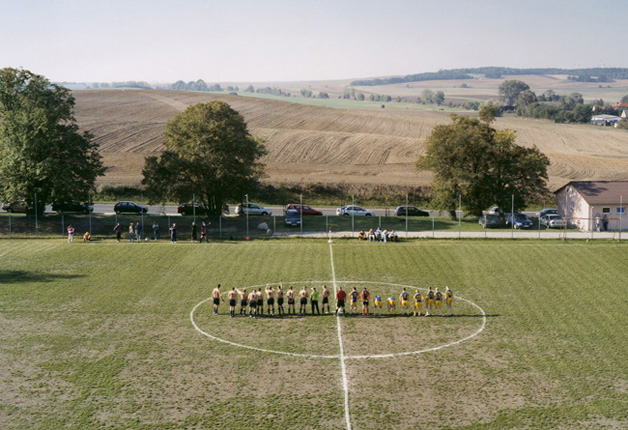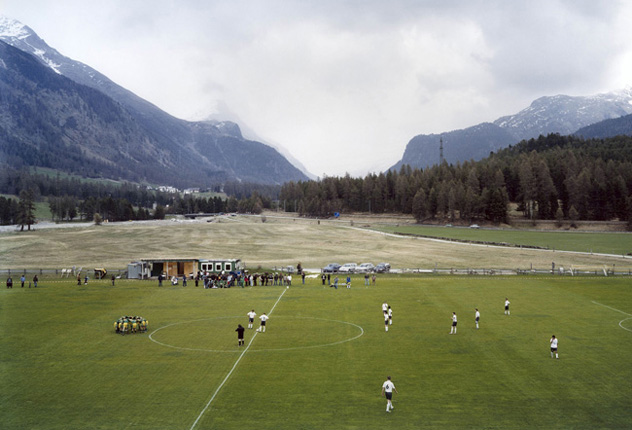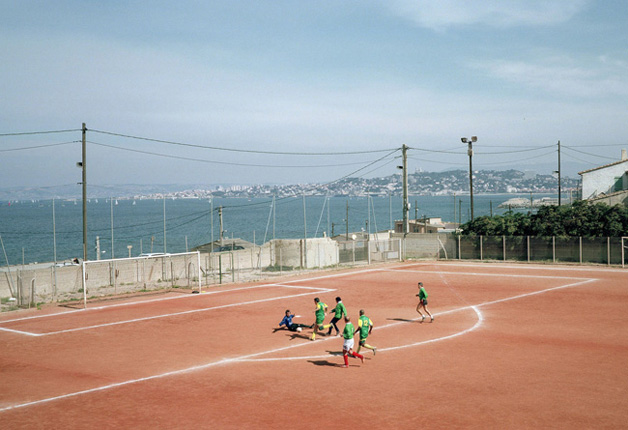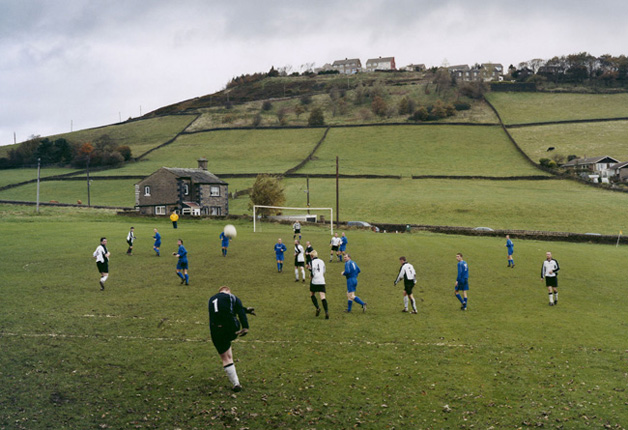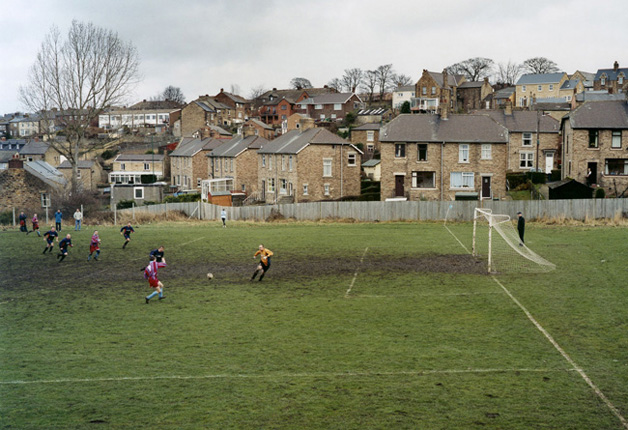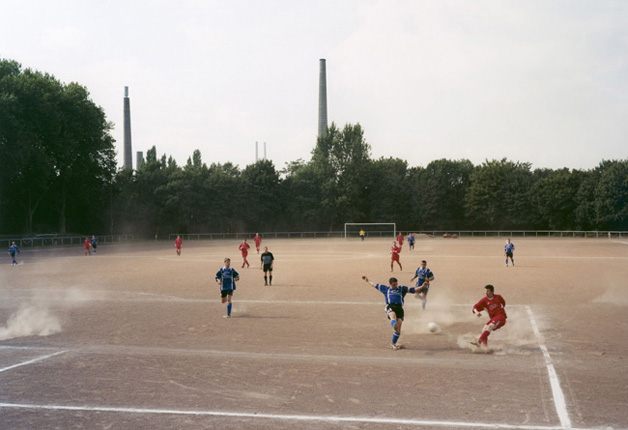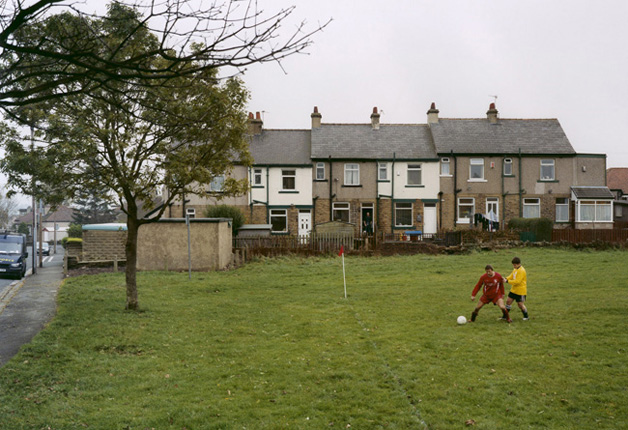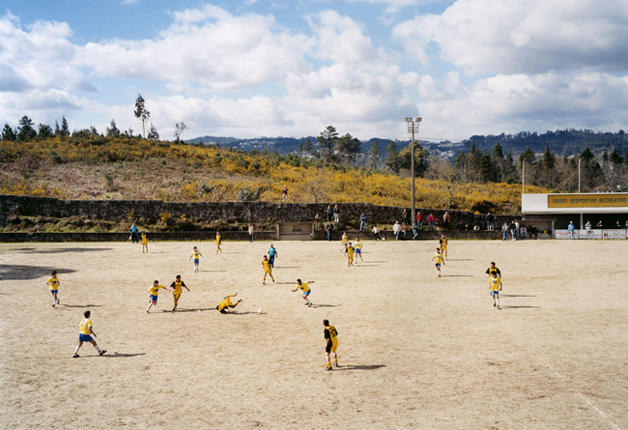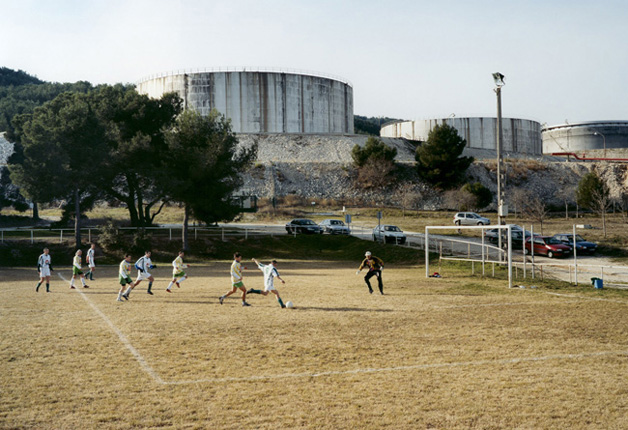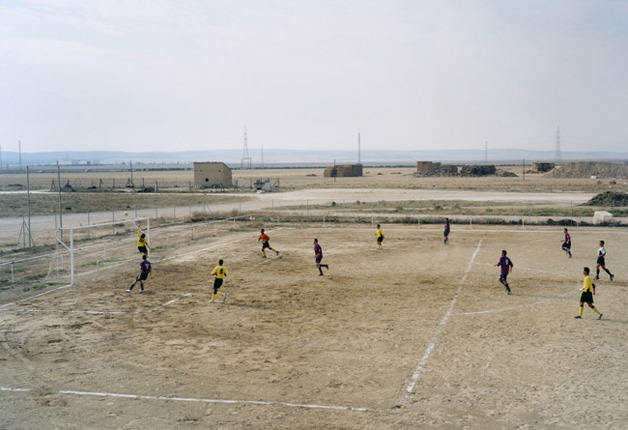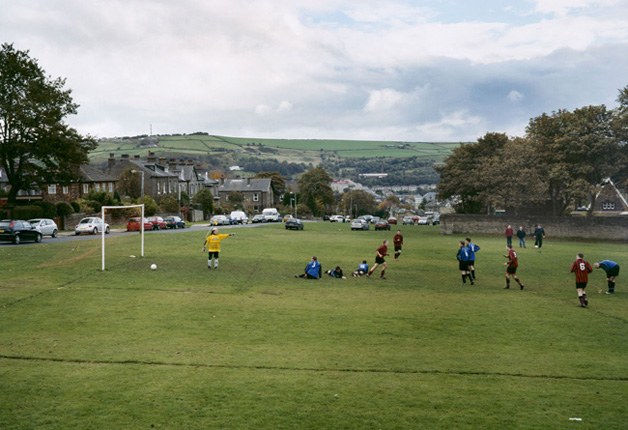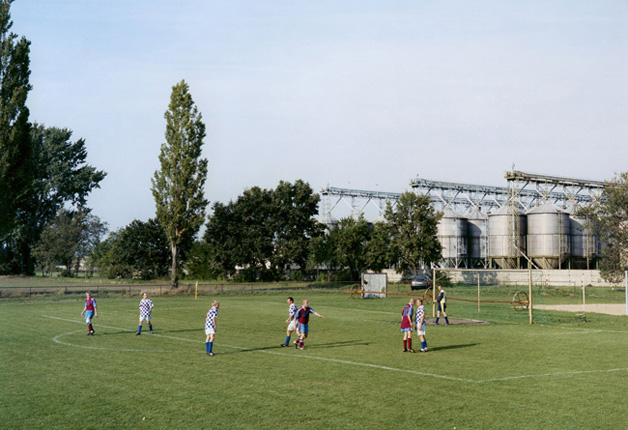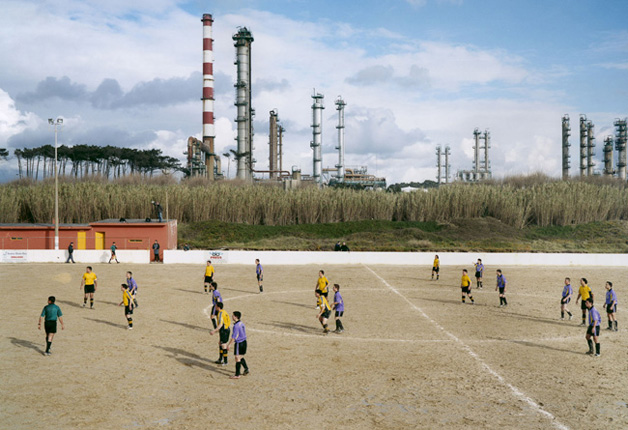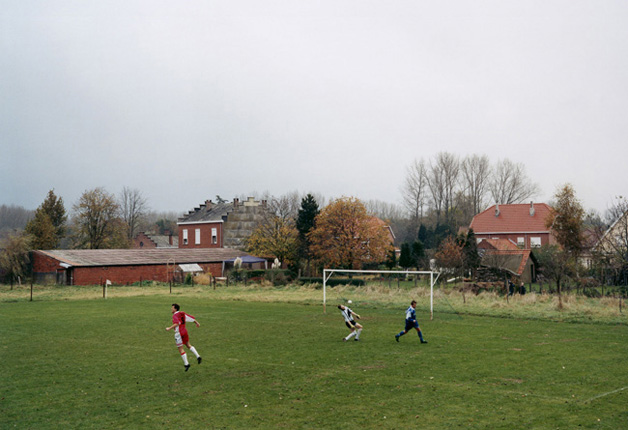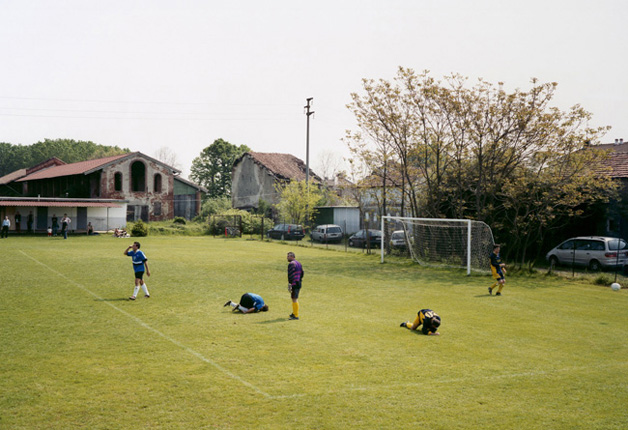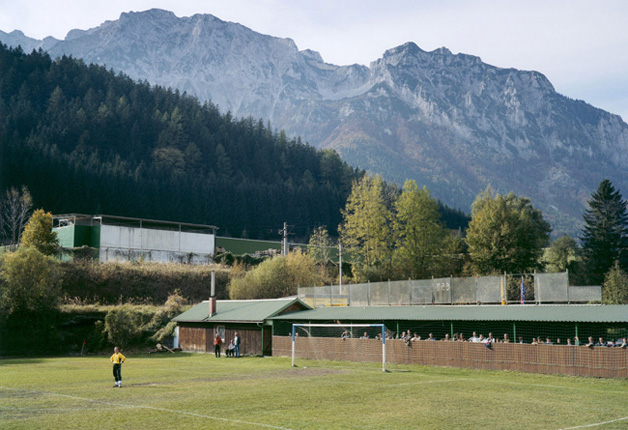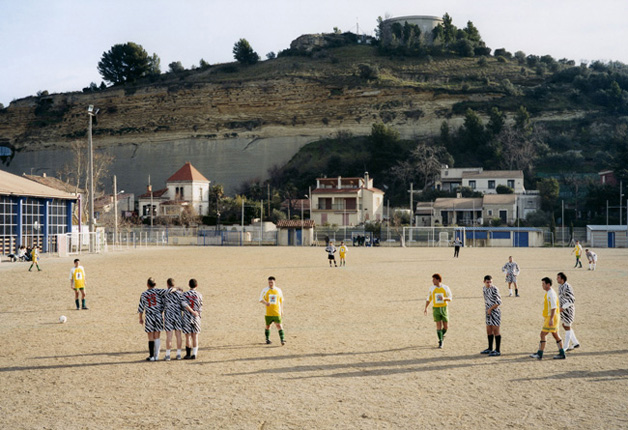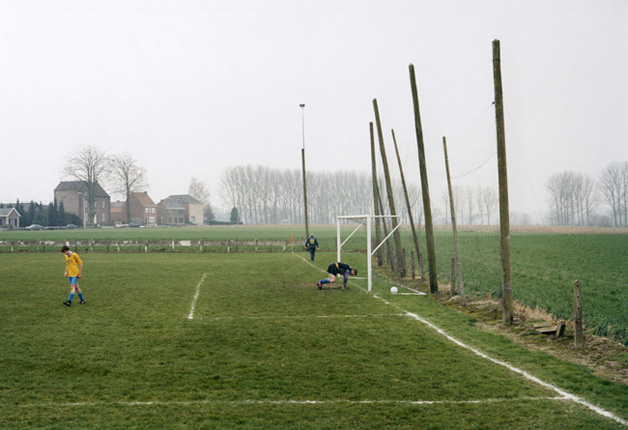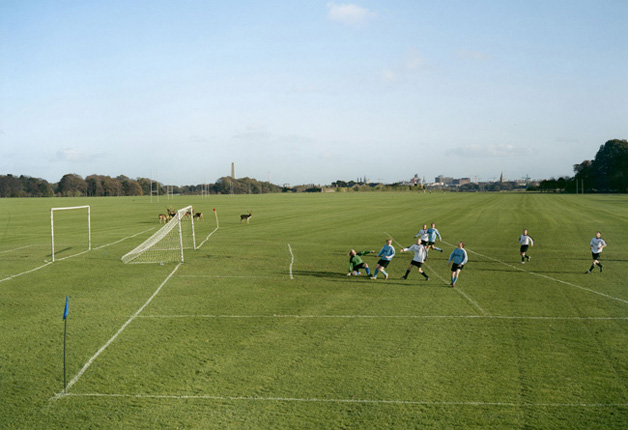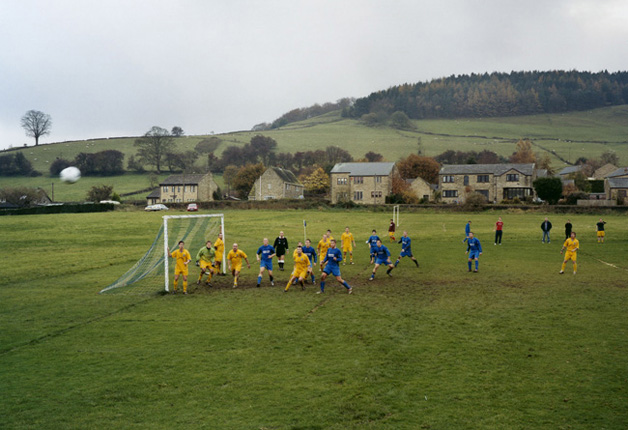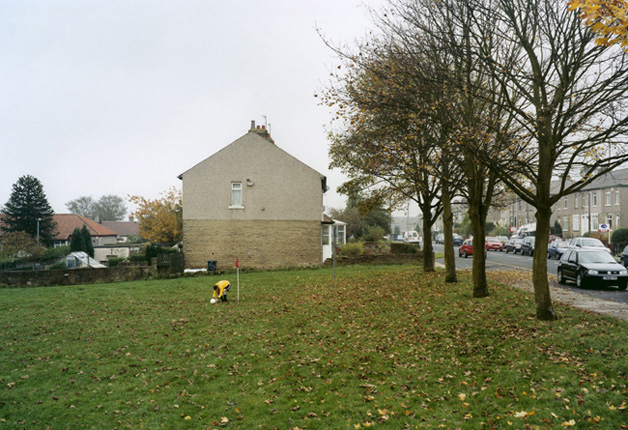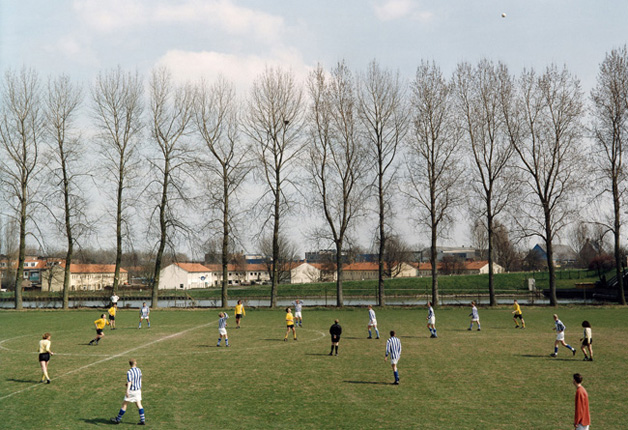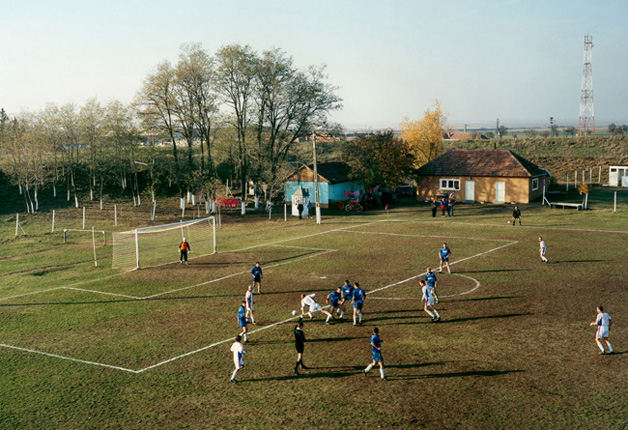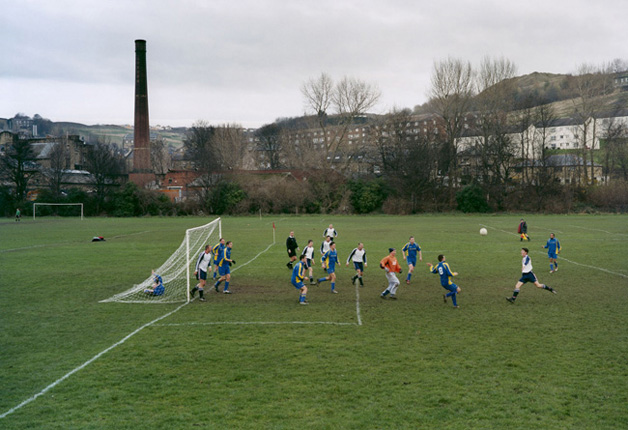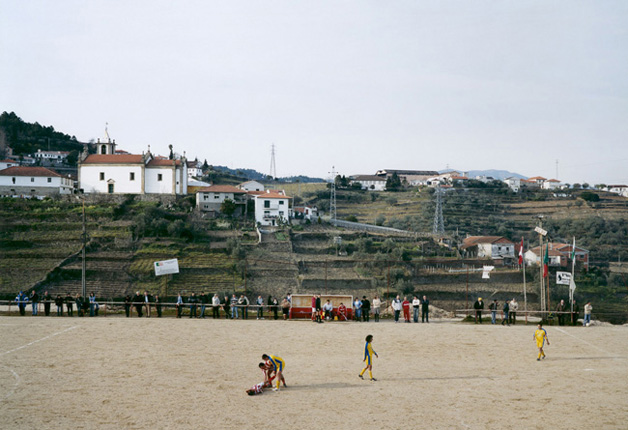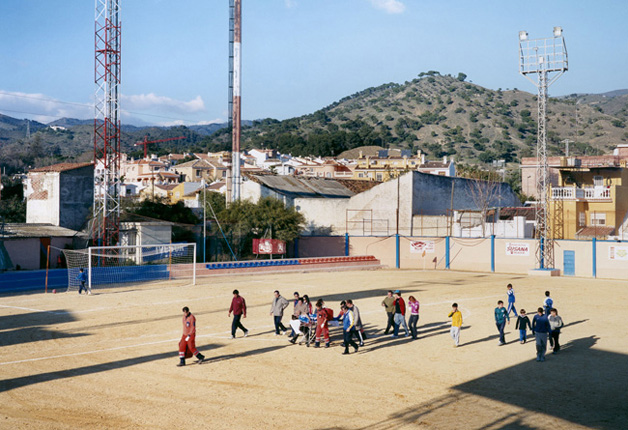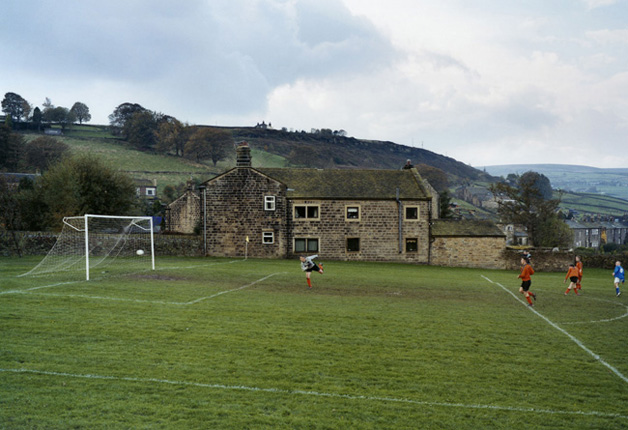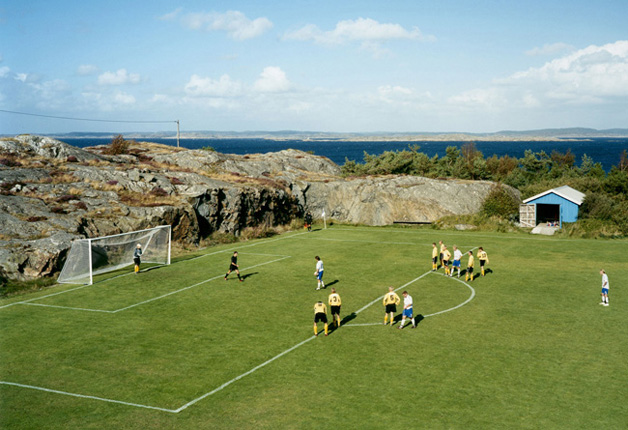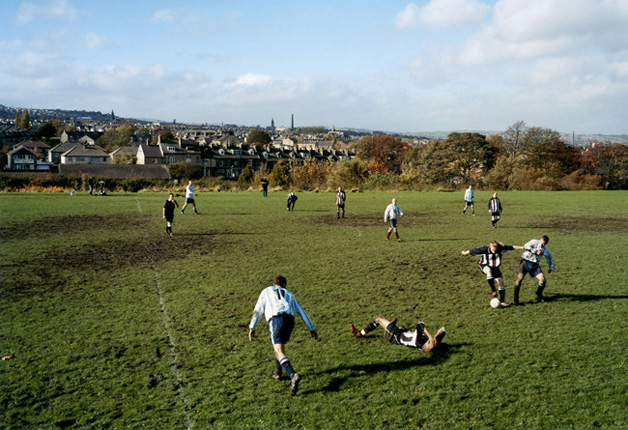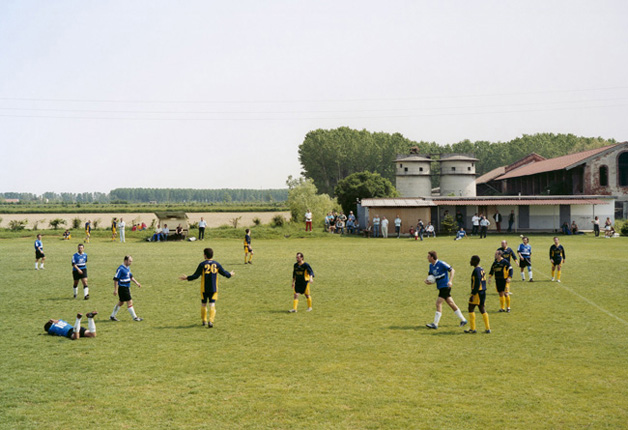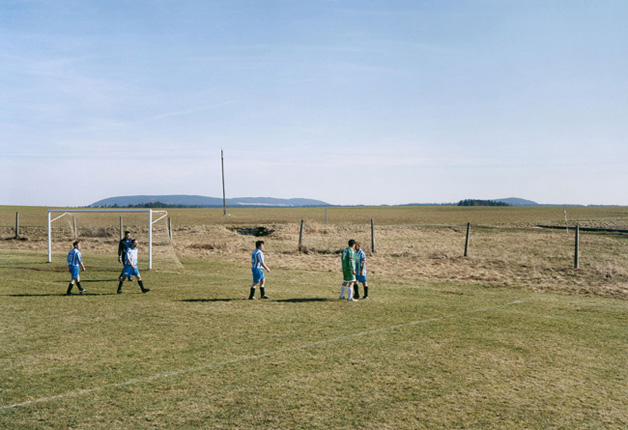In 1988 someone in the Spaarnestad Archive in Haarlem, Holland’s largest photo archive, showed me a pile of old football photographs. They were beautiful black and white prints of the Dutch national team’s international games from the beginning of the twentieth century until the mid-1950s. Most of the photographs were taken from behind the goal, but some from a position up in the stands. The space in the images looked so obvious to me that I wondered why I never had seen football pictures like them before. Taken with old large-format cameras, each photographs was pin sharp. You were allowed to see the entire setting of the match. The pitch was only the foreground. You could also distinguish the faces of hat-wearing men in long coats in the opposite stand, the flags on top of the roof and the trees beyond; or traffic in a street in the distance. I found these unintentionally photographed details touching. In the archive you could see how radically the photography of football had changed at the end of the fifties: space disappeared from the images. In a sport which is all about the position of the players on the pitch, the photographers had given up one of their most powerful weapons: the overview. One of the reasons behind the change was a technical development. At the end of the fifties press photographers abandoned their bulky speed graphic cameras for more the more versatile 35mm format. Film became faster and, crucially, telephoto lenses arrived. From then on the typical photograph of a football match depicted two players and a ball set against an out of focus background, given no sense of where on the pitch this fragment of action had occurred. It was also around this time that television began broadcasting football matches. The role of providing the overview was taken over by television.
In 1995 de Volkskrant newspaper asked me to photograph for an issue on amateur football. I started looking for grounds where a world outside the football game was present in the backdrop. At first I attended higher league amateur games, but soon I gravitated to lower divisions and the typical rural grounds outside villages. There I could give the landscape it’s ‘unintentional’ place beyond football.
Two years after the 1998 publication of the book Dutch Fields the alternative football magazine JOHAN was founded in The Netherlands. They offered me a regular double-page spread at the back of their magazine. Every month I presented a different European location. I was later invited by European Photography institutions to photograph amateur football in their regions.
‘As far away as possible from the Champions League’ was the phrase I used to try and explain my project to officials at regional football association all over Europe. I hoped it would help create a picture in their mind of the kind of football and the kind of ground I was looking for – the passionate football of less talented players in the lower leagues, in a setting miles away from packed stands and roof covered stadiums. In the hearts and minds of these amateur players in all those villages, the stadiums are not far away at all. Even in remote villages in Europe amateur teams line up near the centre-circle. Then they wave at a packed stand. In reality they are a plumber, teacher, tax inspector,systems analist, salesman, bank clerk, farmer, garage owner, glass cutter, student or baker and they are waving at no more than two men and a dog. That is proof enough of the powerful mechanism that nobody can take away from us: our imagination. And for me that is exactly where football and photography come together.’

